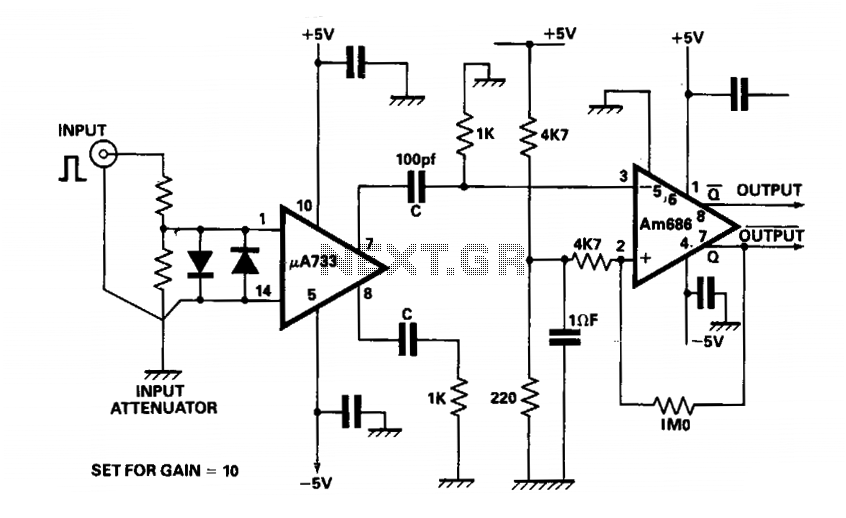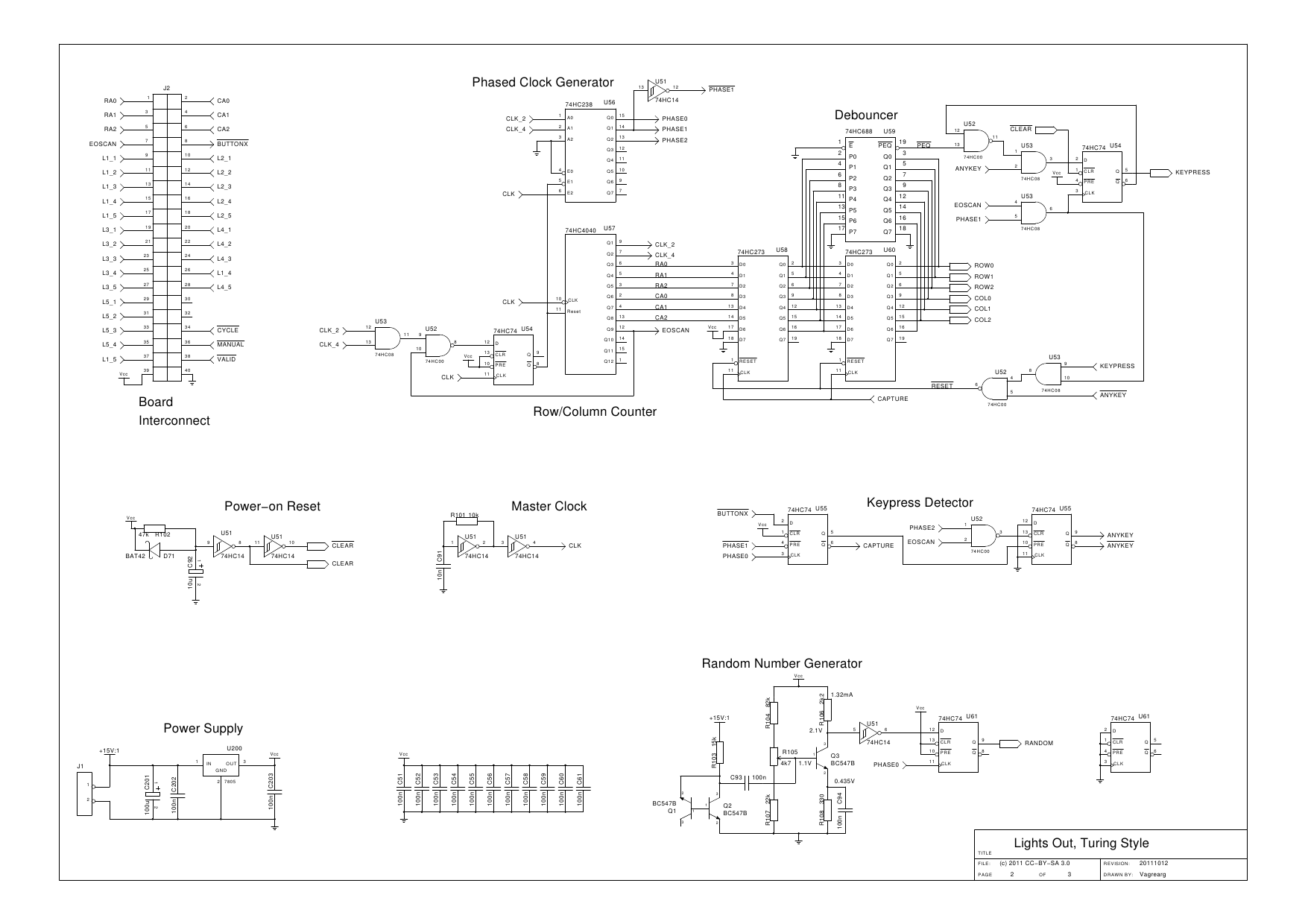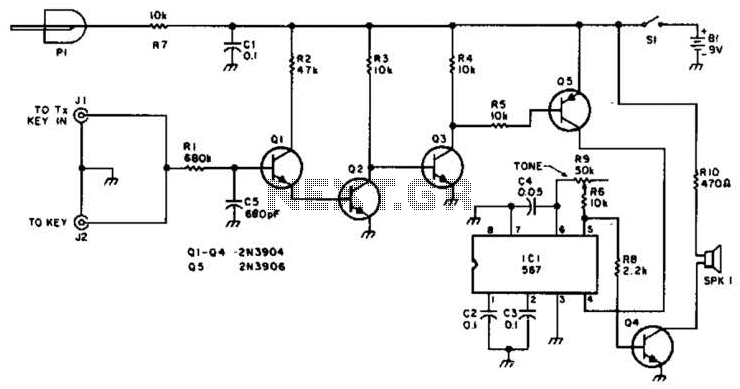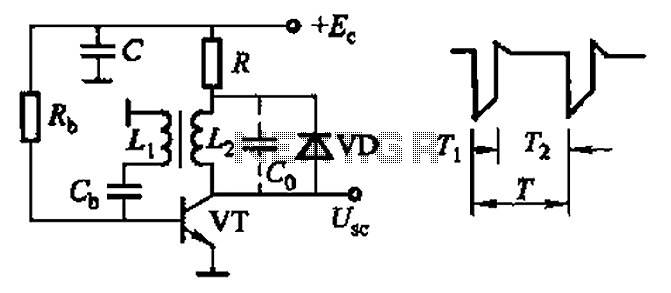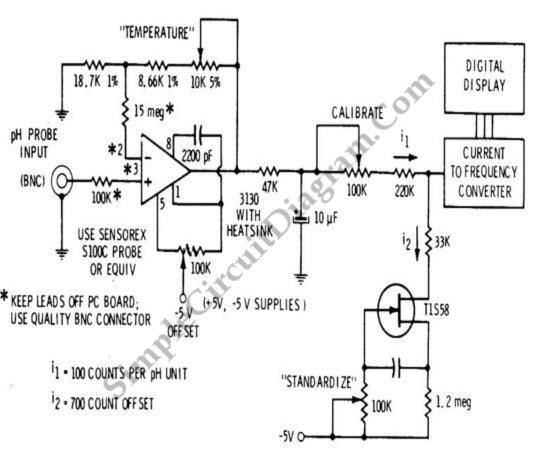
Checking out the Pierce oscillator
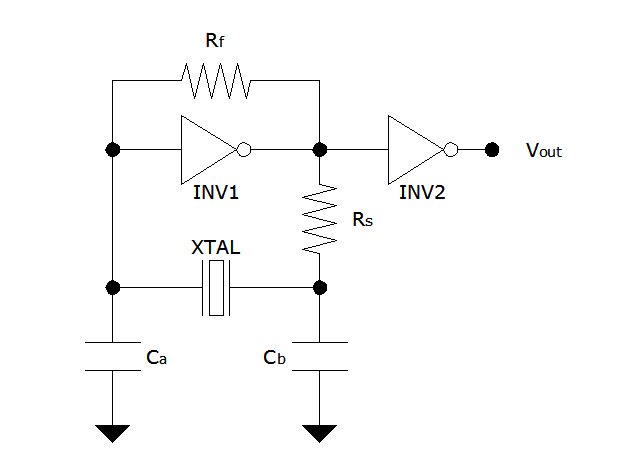
The Pierce oscillator is a simple circuit that, like the ring oscillator, utilizes inverters, though typically only one inverter is required. Its operational principle differs significantly from that of the ring oscillator, as it employs the inverter in its linear region, functioning as an analog amplifier. For an in-depth understanding of the gate-based Pierce oscillator, consulting the references listed is advisable. This summary provides useful tips and formulas derived from those references, which assist in establishing a crystal-based oscillator. Various breadboard experiments have been conducted, and results are documented. The inverter (INV) is the core component, and the oscillator signal is extracted from the inverter output (Vout). To enhance the rise and fall times of the signal, an additional inverter or a fast Schmitt trigger can be implemented. The input signal to the inverter is sinusoidal and may be used in different ways, depending on the specific Microchip MCU datasheets. The feedback resistor (Rf) is critical for maintaining the inverter in linear mode. A table of recommended Rf values based on crystal frequency is provided. The series resistor (Rs) limits crystal drive, and its value can be approximated by equating it to the reactance of the capacitor (Cb). Rs is generally kept below 100 K ohms to minimize noise susceptibility, with lower values recommended for high-impedance inputs. For low-frequency crystals, higher Rs values may be permissible. The capacitors Ca and Cb, along with Rs and the crystal (XTAL), provide a 180-degree phase shift, with the inverter contributing the additional 180 degrees for a total of 360 degrees. The Rs and Cb network acts as a low-pass filter to prevent the oscillator from operating at higher harmonics. The values of Ca and Cb influence the gain, and while they are usually equal, Cb can be larger than Ca. The input voltage at the inverter is influenced by the ratio of Cb to Ca. The values of Ca and Cb should meet the load capacitance specifications of the crystal, which typically range from 12 pF to 32 pF. Oscillator design is inherently experimental, requiring a blend of theoretical and practical techniques. Experimental results from tests using 4.000 MHz and 32.768 kHz crystals suggest optimized resistor and capacitor values based on trial and error. The National Semiconductor MM74HC02N quad 2-input NOR gate is mentioned, with an emphasis on the benefits of using buffered gates in terms of power consumption and gain.
The Pierce oscillator is characterized by its simplicity and effectiveness in generating stable oscillations, particularly when utilizing crystal oscillators. The core of the circuit consists of a single inverter, which is configured to operate in its linear region, allowing it to amplify the oscillating signal generated by the crystal. The feedback resistor (Rf) plays a crucial role in maintaining the inverter's linear operation, ensuring that the circuit can sustain oscillations without entering a digital state.
In terms of component selection, the inverter should ideally be a buffered type to reduce power consumption and increase gain. The output signal is taken from the inverter, which can be further processed using additional components, such as Schmitt triggers, to refine the signal quality. The choice of resistors and capacitors is critical; Rs must be carefully calculated to balance crystal drive and noise immunity. The interaction between Rs and the capacitors (Ca and Cb) is essential for achieving the desired phase shift necessary for stable oscillation.
The capacitors not only influence the gain but also determine the frequency stability of the oscillator. By adjusting the values of Ca and Cb, one can fine-tune the oscillator's performance to meet specific application requirements. The load capacitance specified by the crystal manufacturer must be adhered to, ensuring optimal performance and reliability.
Overall, the design of a Pierce oscillator requires a careful balance of theoretical knowledge and practical experimentation. The iterative process of testing and refining component values is integral to achieving a successful oscillator circuit that meets the desired frequency and stability criteria.The Pierce oscillator is a very simple circuit and as with the ring oscillator also uses inverters (actually just one inverter will do). The principle of operation, however, is very different. While the ring oscillator exploits the incremental propagation delay through the series of inverters, the Pierce oscillator puts the inverter/gate into the
linear region of operation and employs it as an analog amplifier. To find out the details of the gate-based Pierce oscillator I recommend reading the references listed below. What follows is just a summary of the tips and formulas culled from the said references, pointers and tidbits which I found useful in getting a crystal-based oscillator up and running.
I also did a number of breadboarded experiments and the results are shown below. INV is of course the inverter (buffered or unbuffered). Oscillator signal is taken from the inverter output (Vout). To improve (decrease) its rise/fall time, another inverter or, better yet, a (fast!) Schmitt trigger can be used to spruce up the signal. The signal at the inverter input is a sinusoid and can also be used (some Microchip MCU datasheets show the clock signal being derived from the input of the inverter while other Microchip datasheets show it being taken from the inverter output).
Rf is a feedback resistor that puts the gate in linear (as opposed to digital) mode operation. The following table provides a rule of thumb value for Rf given crystal frequency: Among other things, Rs limits the amount of crystal drive-increasing Rs decreases drive. A ballpark figure or first cut value for Rs can be derived by computing for and equating Rs to the reactance of Cb: Rs is typically 40 K ohms or less, but is almost never more than 100 K ohms.
If the value for Rs is too high, then the high impedance input side of the amplifier may be more susceptible to noise, very much the same way a pull-up resistor on an input pin is normally kept below about 50 K ohms to prevent noise from having enough strength to override the input. Freescale (Motorola) meanwhile claims that for low frequencies such as 32. 768kHz watch crystals, Rs can go as high as 330Kohms. Because of a permissible maximum drive of just 1 µW, a minimum Rs value for tuning fork crystals such as the 32.
768kHz crystal is 10kohm. Ca and Cb along with Rs and XTAL provide a 180 degree phase shift (INV provides the other 180 degrees for a total of 360). Moreover, the Rs and Cb network partly "acts as a low pass filter that discourages the crystal from running at a third or fifth harmonic, or other higher frequency" (Lancaster and Berlin).
Increasing Ca and Cb decreases the gain. Ca and Cb are usually equal but Cb can be made larger than Ca. The voltage at the input of INV is (partly) determined by Cb / Ca, so that increasing Cb relative to Ca increases the voltage at INV input. As a rule the values of Ca and Cb should satisfy the following condition: where Cload is the load capacitance of the crystal as per manufacturer`s specifications.
Typical load capacitances are 12 pF, 15 pF, 18 pF, 20 pF, 22 pF and 32 pF. Finally, an advice worth keeping in mind: "Oscillator design is an imperfect art at best. Combinations of theoretical and experimental design techniques should be used. " And so we move on to the experimental side of things. I performed a few tests on a breadboard using 4. 000 MHz and 32. 768 kHz crystals. The values for the resistors and caps are the ones I arrived at after some trial and error. The values below seem to work better. Yes, that`s a very subjective assessment and shall leave it at that. II. National Semiconductor MM74HC02N quad 2-input NOR gate. Unfortunately, I don`t currently have any CMOS HC or AC series inverters. According to the datasheet each NOR gate is buffered as follows: Using a buffered gate in a Pierce oscillator consumes less power and has a gain in the order of thousands compared to an unbuffered ga 🔗 External reference
The Pierce oscillator is characterized by its simplicity and effectiveness in generating stable oscillations, particularly when utilizing crystal oscillators. The core of the circuit consists of a single inverter, which is configured to operate in its linear region, allowing it to amplify the oscillating signal generated by the crystal. The feedback resistor (Rf) plays a crucial role in maintaining the inverter's linear operation, ensuring that the circuit can sustain oscillations without entering a digital state.
In terms of component selection, the inverter should ideally be a buffered type to reduce power consumption and increase gain. The output signal is taken from the inverter, which can be further processed using additional components, such as Schmitt triggers, to refine the signal quality. The choice of resistors and capacitors is critical; Rs must be carefully calculated to balance crystal drive and noise immunity. The interaction between Rs and the capacitors (Ca and Cb) is essential for achieving the desired phase shift necessary for stable oscillation.
The capacitors not only influence the gain but also determine the frequency stability of the oscillator. By adjusting the values of Ca and Cb, one can fine-tune the oscillator's performance to meet specific application requirements. The load capacitance specified by the crystal manufacturer must be adhered to, ensuring optimal performance and reliability.
Overall, the design of a Pierce oscillator requires a careful balance of theoretical knowledge and practical experimentation. The iterative process of testing and refining component values is integral to achieving a successful oscillator circuit that meets the desired frequency and stability criteria.The Pierce oscillator is a very simple circuit and as with the ring oscillator also uses inverters (actually just one inverter will do). The principle of operation, however, is very different. While the ring oscillator exploits the incremental propagation delay through the series of inverters, the Pierce oscillator puts the inverter/gate into the
linear region of operation and employs it as an analog amplifier. To find out the details of the gate-based Pierce oscillator I recommend reading the references listed below. What follows is just a summary of the tips and formulas culled from the said references, pointers and tidbits which I found useful in getting a crystal-based oscillator up and running.
I also did a number of breadboarded experiments and the results are shown below. INV is of course the inverter (buffered or unbuffered). Oscillator signal is taken from the inverter output (Vout). To improve (decrease) its rise/fall time, another inverter or, better yet, a (fast!) Schmitt trigger can be used to spruce up the signal. The signal at the inverter input is a sinusoid and can also be used (some Microchip MCU datasheets show the clock signal being derived from the input of the inverter while other Microchip datasheets show it being taken from the inverter output).
Rf is a feedback resistor that puts the gate in linear (as opposed to digital) mode operation. The following table provides a rule of thumb value for Rf given crystal frequency: Among other things, Rs limits the amount of crystal drive-increasing Rs decreases drive. A ballpark figure or first cut value for Rs can be derived by computing for and equating Rs to the reactance of Cb: Rs is typically 40 K ohms or less, but is almost never more than 100 K ohms.
If the value for Rs is too high, then the high impedance input side of the amplifier may be more susceptible to noise, very much the same way a pull-up resistor on an input pin is normally kept below about 50 K ohms to prevent noise from having enough strength to override the input. Freescale (Motorola) meanwhile claims that for low frequencies such as 32. 768kHz watch crystals, Rs can go as high as 330Kohms. Because of a permissible maximum drive of just 1 µW, a minimum Rs value for tuning fork crystals such as the 32.
768kHz crystal is 10kohm. Ca and Cb along with Rs and XTAL provide a 180 degree phase shift (INV provides the other 180 degrees for a total of 360). Moreover, the Rs and Cb network partly "acts as a low pass filter that discourages the crystal from running at a third or fifth harmonic, or other higher frequency" (Lancaster and Berlin).
Increasing Ca and Cb decreases the gain. Ca and Cb are usually equal but Cb can be made larger than Ca. The voltage at the input of INV is (partly) determined by Cb / Ca, so that increasing Cb relative to Ca increases the voltage at INV input. As a rule the values of Ca and Cb should satisfy the following condition: where Cload is the load capacitance of the crystal as per manufacturer`s specifications.
Typical load capacitances are 12 pF, 15 pF, 18 pF, 20 pF, 22 pF and 32 pF. Finally, an advice worth keeping in mind: "Oscillator design is an imperfect art at best. Combinations of theoretical and experimental design techniques should be used. " And so we move on to the experimental side of things. I performed a few tests on a breadboard using 4. 000 MHz and 32. 768 kHz crystals. The values for the resistors and caps are the ones I arrived at after some trial and error. The values below seem to work better. Yes, that`s a very subjective assessment and shall leave it at that. II. National Semiconductor MM74HC02N quad 2-input NOR gate. Unfortunately, I don`t currently have any CMOS HC or AC series inverters. According to the datasheet each NOR gate is buffered as follows: Using a buffered gate in a Pierce oscillator consumes less power and has a gain in the order of thousands compared to an unbuffered ga 🔗 External reference
